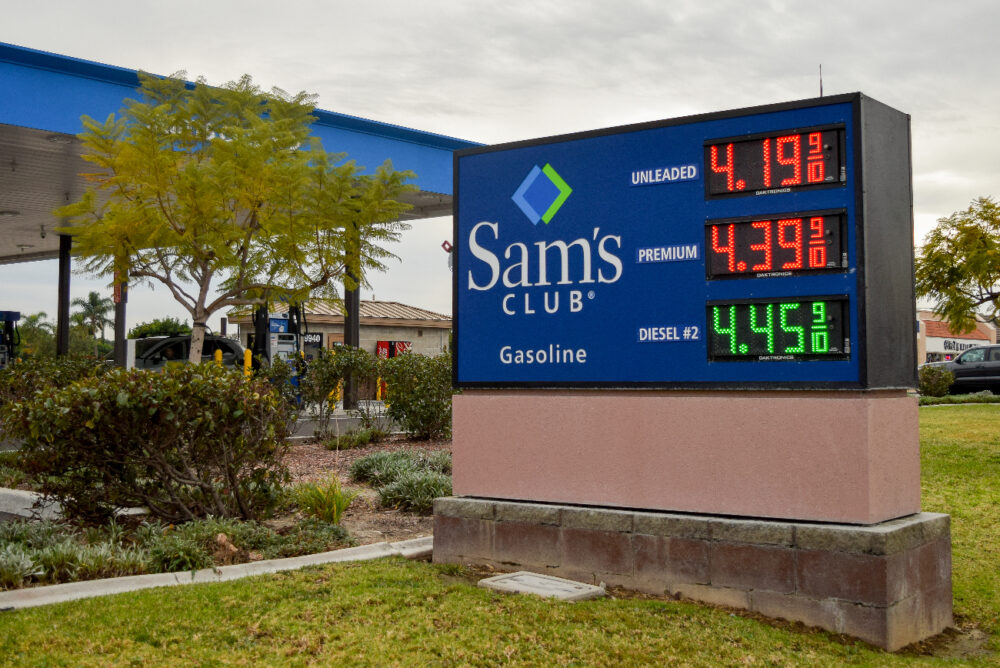
By Trinity Chau
Gas prices in California continue to rise and according to the American Automobile Association, they are now averaging around $4.657 per gallon, compared to the $3.285 per gallon that was just a year ago.
This rise in gas prices is due to Covid-19, when just a year ago many of us were at home quarantining. Now, with workplaces and schools open and many of us just spent the holidays with our families last month, the rise and demand of gas has gone up.
Another reason that could relate back to the rising gas prices is the prices of oil production has also gone up. The price per barrel is around $85, compared to the less than $20 per barrel during Covid-19. The price per barrel has gone up more than triple the amount due to Covid-19 and the high demand for these necessities.
In Orange County, gas prices per gallon are currently averaging around $4.647, hitting its peak in early October, which was around $4.690. The difference between the two is $0.043.
Other states such as Hawaii, have also experienced an increase in gas prices. They have the second highest gas price in the US of $4.337 per gallon. However, California is still $0.31 ahead.
California’s fuel tax is higher than other states and is around $0.79. If you were to include the fees that come with gas, it would add up to around 1.18 per gallon of gas.
But what exactly are all these fees and taxes?
One of the taxes includes Senate Bill 1, which is used to improve roads and fund for public transit. The other two taxes include the federal and state excise tax.
California has additional fees, which include the Underground Storage Tank fee, Fuels Under the Cap fee and Low Carbon Fuel Standard fee.
The Underground Storage Tank is a maintenance fee used to maintain underground petroleum storage tanks. The Fuels Under the Cap fee is California’s cap and trade system used to regulate and lower greenhouse gas emissions. The Low Carbon Fuel Standard fee is another program set to reduce greenhouse gas.
Rising gas prices could cause a number of problems like how many Californians now have to include this rising price into their monthly budget alongside necessities such as food, utilities and rent.
People of low income, for example, will now have to spend a higher amount of money from their lower wage on gas in order to commute to their workplace. This causes an extra responsibility, as they now have to spend more on gas.
The rise in gas prices has also affected transportation. With goods to be delivered and gas prices rising, shipping and delivery prices have increased.
Due to this past and current surge in supply and demand, combined with the rise in gas prices, it has resulted in supply chain disruptions. According to Reuters, this disruption creates higher prices in consumer products all over the world.
In November, the United Nations Conference on Supply on Trade and Development found that supply chain disruptions also cause ports to be blocked, not allowing goods to be delivered and shipped properly. Until unblocked, there will continue to be a clear surge in goods and commodities.
The US could see prices rise by 1.2% due to the supply chain disruptions.
Locally, many student drivers at Fountain Valley High School (FVHS) are also influenced by this rise in gas prices.
Junior Tran Nguyen and senior Carley Abbott-Hayes are both one of the many students at Fountain Valley High School (FVHS) who are directly influenced by this rise in gas price.
“It’s kind of annoying for me because I need to get to school and get to work and with the rising gas prices…it’s becoming more inconvenient for me to go places I need to,” Nguyen said.
Public transportation has also been brought up in the conversation of rising gas prices as it is a cost efficient alternative to driving.
“I think if our public transportation was better than I wouldn’t have to rely on things such as my car as much,” Abbott-Hayes said.
Electric cars are another solution to the rising cost of gas, as they improve climate change and become cost effective in the long run.
“I feel as though the market drives the prices and that if people are unhappy with it, they should switch to electric cars,” history teacher Cory Nelson said.
California is taking a lead on electric vehicles through the executive order placed by Gov. Gavin Newsom. This order states that by 2035, California will ban all sales of gasoline-powered vehicles.
This rise in gas and oil prices has affected all the US and will continue to cause a problem for those who rely on it for transportation. However, doing things like carpooling, being more conscious of the amount you are driving and biking or walking to places instead, are all other smaller, but effective solutions to the rising gas prices.





